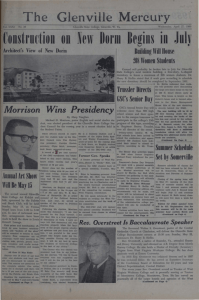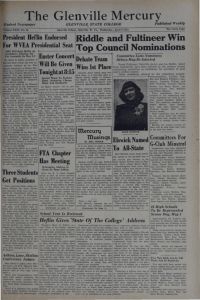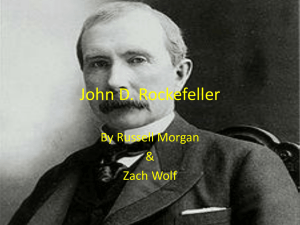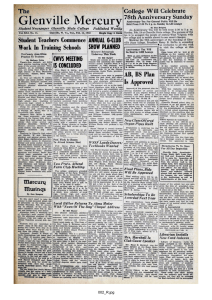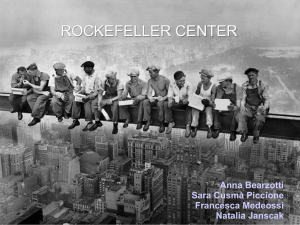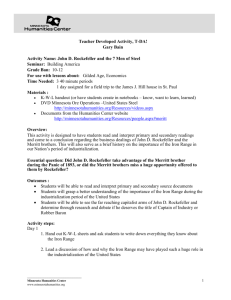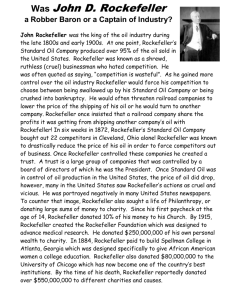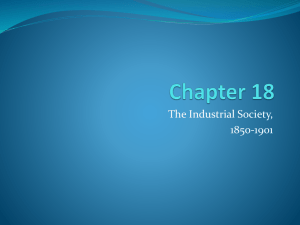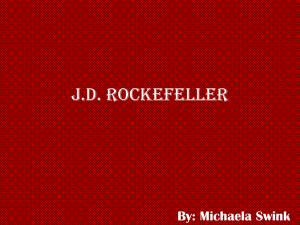Roominations_5-12-05
advertisement
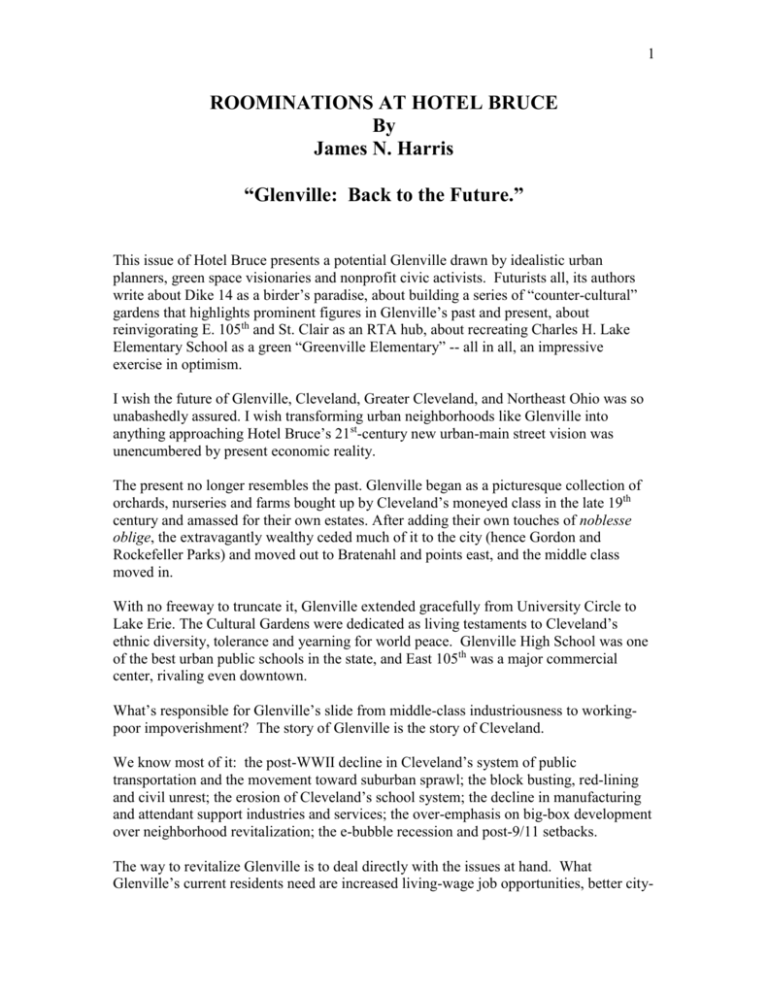
1 ROOMINATIONS AT HOTEL BRUCE By James N. Harris “Glenville: Back to the Future.” This issue of Hotel Bruce presents a potential Glenville drawn by idealistic urban planners, green space visionaries and nonprofit civic activists. Futurists all, its authors write about Dike 14 as a birder’s paradise, about building a series of “counter-cultural” gardens that highlights prominent figures in Glenville’s past and present, about reinvigorating E. 105th and St. Clair as an RTA hub, about recreating Charles H. Lake Elementary School as a green “Greenville Elementary” -- all in all, an impressive exercise in optimism. I wish the future of Glenville, Cleveland, Greater Cleveland, and Northeast Ohio was so unabashedly assured. I wish transforming urban neighborhoods like Glenville into anything approaching Hotel Bruce’s 21st-century new urban-main street vision was unencumbered by present economic reality. The present no longer resembles the past. Glenville began as a picturesque collection of orchards, nurseries and farms bought up by Cleveland’s moneyed class in the late 19th century and amassed for their own estates. After adding their own touches of noblesse oblige, the extravagantly wealthy ceded much of it to the city (hence Gordon and Rockefeller Parks) and moved out to Bratenahl and points east, and the middle class moved in. With no freeway to truncate it, Glenville extended gracefully from University Circle to Lake Erie. The Cultural Gardens were dedicated as living testaments to Cleveland’s ethnic diversity, tolerance and yearning for world peace. Glenville High School was one of the best urban public schools in the state, and East 105th was a major commercial center, rivaling even downtown. What’s responsible for Glenville’s slide from middle-class industriousness to workingpoor impoverishment? The story of Glenville is the story of Cleveland. We know most of it: the post-WWII decline in Cleveland’s system of public transportation and the movement toward suburban sprawl; the block busting, red-lining and civil unrest; the erosion of Cleveland’s school system; the decline in manufacturing and attendant support industries and services; the over-emphasis on big-box development over neighborhood revitalization; the e-bubble recession and post-9/11 setbacks. The way to revitalize Glenville is to deal directly with the issues at hand. What Glenville’s current residents need are increased living-wage job opportunities, better city- 2 service delivery, a local supermarket, and safe streets. Attracting new residents demands more retail and more service establishments, better and more varied housing stock, and irrefutable evidence of a resuscitated public school system. To further much-needed commercial development, small businesses and entrepreneurship must be encouraged in every possible way. This demands collaborative effort. In Hotel Bruce’s feature article on highest, best land use of E. 105th Street, successful commercial development seems stymied by the parking needs of churches. The conflict seems irreconcilable. But this need not be so: On the six days other than Sunday, the churches can encourage business formation on the land they occupy and own. They can empower an ecumenical, entrepreneurial partnership to create neighborhood-based businesses to express a faithbased outlook while improving Glenville’s economy. If these businesses succeed, the parking issue will be worked out. (Perhaps one of the businesses will even come up with the solution to both the churches’ parking and the community’s retail needs?.) Also key is more efficient use Glenville’s existing resources. Glenville’s greatest natural resource is Rockefeller Park. Rockefeller Park should be Cleveland’s Central Park. If Rockefeller Park is perceived as accessible and safe, Glenville will leap forward. The most prestigious residential area in Glenville, the Glenville Historic District, fronts Rockefeller Park. If Rockefeller Park can recapture what it once was, the empty lots, houses and apartments surrounding it will become prime residential real estate. As Lincoln Park sparked Tremont’s redevelopment, Rockefeller Park can reinvigorate Glenville. How do we do this? Rockefeller Park, with the Rockefeller Greenhouse as its anchor and the park’s Cultural Gardens as a unique set of outdoor galleries, should be used constantly. The park begs to be the setting of a major music/arts festival. It is alive, and it should be lively. It is a land bridge between the worlds of art and culture found in University Circle and the natural environments found on the shores of Lake Erie. It is a connector and it should connect. To improve the odds, Martin Luther King Jr. Boulevard has to become user friendly. Right now, we drive through Rockefeller Park -- we can’t stop and use the park any more than a single red corpuscle can fight arterial flow. The Doan Brook Restoration Project, which is a mammoth wastewater management initiative largely meant to rectify past planning mistakes, can and should incorporate small parking areas in its rehabilitation effort so that visitors can actually “park and stroll” through the park. Each parking area should be discretely designed as a small garden gateway, complete with a bicycle rack, benches and artwork. Lighting also needs to be increased all along MLK, the park’s internal and upper walks, and its entrances and exits. 3 Eventually, MLK commuter traffic must be routed back to E. 105th where it belongs and where it can do commercial good. Relocating the Shoreway exit to E. 105th (or even swinging east from 105th to a better designed Eddy Rd. exit) will accelerate Glenville’s economic redevelopment efforts, strengthen the St. Clair corridor, and permit a more leisurely use of MLK If this is done correctly -- perhaps in conjunction with ODOT’s plan to reroute elements of the Shoreway -- the union of Rockefeller Park and Gordon Park can once again constitute a splendid gateway to Lake Erie. These projects are doable, practical, and cost-effective. They will have positive, immediate economic impacts, measurable outcomes, improve Glenville’s quality of life, quicken its economic redevelopment, and protect its existing green space. I say let’s do it. Let’s go back to the future. Harris is a partner of H/L Communications www.hlcommunications.com, a privately held marketing, public relations and civic advocacy firm committed to furthering economic and personal development, inclusion and diversity, and access to arts and culture . H/L Communication created and produces “JAZZ at the Rockefeller Greenhouse.” This annual event entering its 3rd year is scheduled for September 10 (rain date 9/17), and is conceived as a step toward creating a regional music/arts festival in Rockefeller Park.
